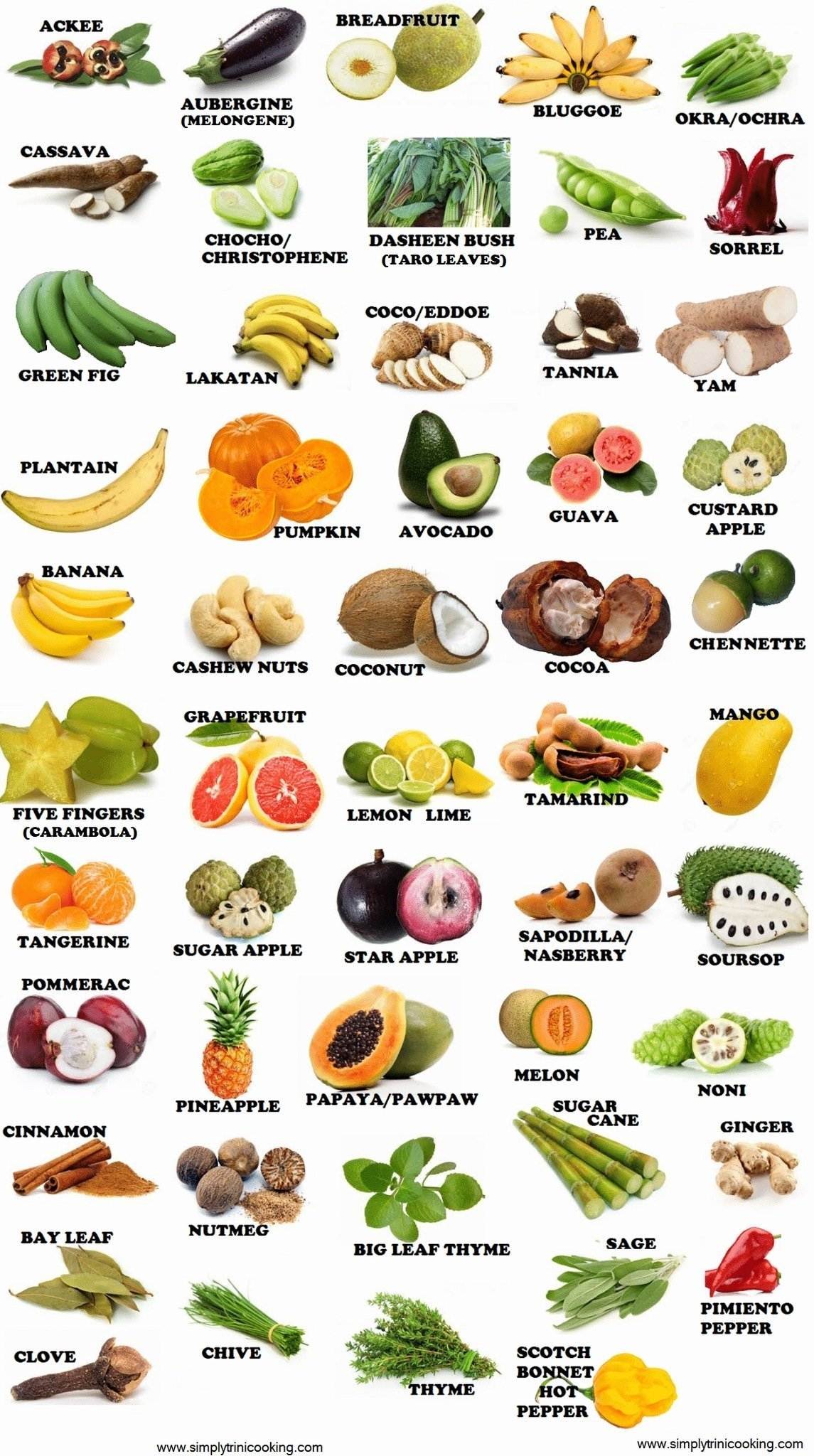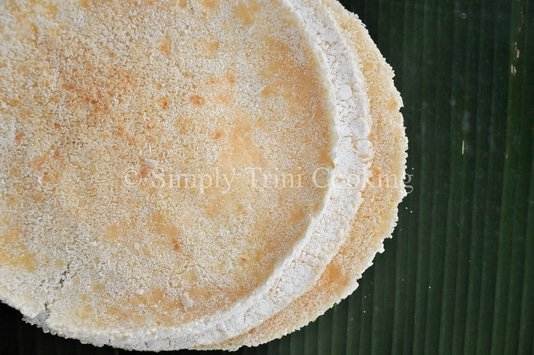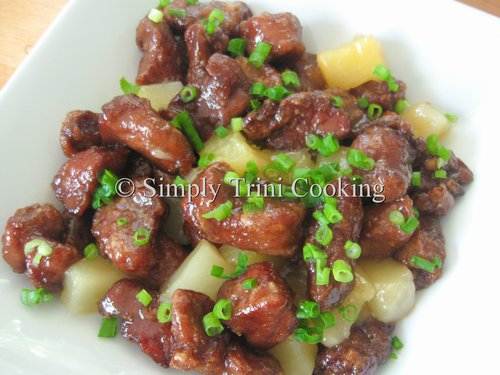“Our food should be our medicine and our medicine should be our food” (Hippocrates). The Trinidad food experience is always memorable. Food does not only satisfy our nutritional needs. Where we live, determines the type of food we eat. For example, in the Caribbean, and it could be the same where you live, food has another dual purpose.
Our food serves as a means of sustenance, and as a means to bring families and communities together. So when it is in abundance (such as in the jovial setting of a family gathering and wedding) and very tasty, it serves this wonderful purpose.
Now, in the Caribbean, our repertoire of Trinidad food did not happen overnight, but it is a testament of our history, an attribute of the land we live on, a product of our culture, and a response to our needs. And like one of my favourite Sunday sides dishes, callaloo, they blend well to help create our unique island experience in Caribbean cuisine.
We have all learned to make use of what is given to us. We can use our natural resources, the abundant fruits and vegetables to make meals that is satisfying and tasty. You can see this in every Caribbean island. The variation of the Caribbean cuisines is a product of the multicultural nature of our West Indian Islands.
The Shaping of Caribbean Food, Cooking and Culture
Our Environment
In the Caribbean, there are many fruits and vegetables. It is a whole lot more convenient buying local fresh fruits and vegetables to cook with. That is why the recipes on this site (simplytrinicooking.com) will mostly reflect what is available and grown locally. It is the favourable climatic conditions throughout the Caribbean that gave us such a wide variety of fruits and vegetables.
The climate is bit different from one area to the next; it is different in elevated land mass and low coastal lying areas. The differences reflect the different trade winds, temperatures, humidity and soil textures. Thus, the type and availability of fruits and vegetables will vary throughout the Caribbean. And so the Caribbean diet and preference for certain foods vary.
Now, the region has a number of native vegetables and fruits. Some examples are sweet potato, pepper, eggplant and tomato. They are all commonly known by all its natives. It is these fruits and vegetables that are the main ingredients in the traditional Caribbean recipes. As long as the people in the Caribbean find these vegetables and fruits readily available, our food and our recipes will always be uniquely Caribbean.
Below is a list of some of the most common vegetables and fruits grown in the Caribbean (some native and some introduced by newcomers to the Caribbean) .
COMMON FRUITS AND VEGETABLES IN THE CARIBBEAN
The People of the Caribbean: Our History affects our eating
In the Caribbean, you will hear someone talk about their Trinidadian or Trini Food, or Jamaican Food, or even Barbadian Food. Each of these groups of people have their unique experiences and thus naturally gravitate towards certain cuisines.
For instance, a favourite Trinidad food or street food is doubles; in Jamaica, Jerk pork and roast yam; and in Barbados, fish cakes. We can get much insight into the history of an island by the food the people eat. A simple examination would confirm the cosmopolitan nature of the many islands. This is so because the people of the Caribbean brought with them their way of cooking and eating.
The Indigenous Peoples
When Columbus came to the “New World” he encountered the native Amerindians (the Caribs, Arawaks and Taino “Indians”). Their daily diet consisted of vegetables and fruits. These native Amerindian tribes enjoyed spicy food. They also introduced the technique of barbecuing meat on green sticks, for which the Spanish called barbacoa (read more about this here).
The Amerindians tended crops, including the popular staples of the Caribbean: dasheen (taro root), corn, squash, yam, and cassava. Among the crops were peanuts, guavas, pineapples, tomatoes, black-eyed peas and lima beans. They caught fish and enjoyed a diet rich in seafood such as: grouper, parrot fish, lobster, shark, and crab.
They hunted for wild meat (and prepared the meat by marinating or washing the meat in water with fresh lime juice. (I must interject by saying that there is no evidence of they being cannibals). They preserved their meat by rubbing salt over the meat. They cooked meat in large clay pots. Some of their habits and ways of cooking have been adopted today by many of the people who live in the Caribbean. For example, they taught us how to cook Agouti (a popular wild animal) in the Trinidad.
The Amerindians shared their cooking techniques (buccaneering meat) and recipes (such as cassava bread and pepper pot stew) with the newcomers. In turn the Spanish introduced sugarcane, orange, ginger, lime, figs, plantain, tamarind, coconut, and grapes to the natives. It was later discovered that rum could be made from fermented cane juice. The indigenous people thus enjoyed a balanced diet.
The Colonists
The early colonist depended on the native Amerindians for food. The colonists also introduced new agricultural products to the environment, such as sugar, cocoa, soy beans, wheat and cucumber. With their culinary skills, they changed the environment and the way of cooking meals in the Caribbean.
What we know as the creole style of cooking, is associated with the French style of cooking. The English introduced bacon and eggs, roast beef, pancakes, sponge cakes, rice pudding, smoked herring and hot cross buns. And the Spanish introduced the popular paella dish.
African Food
It was during the African slave trade that culinary influence from West Africa came to the Caribbean. The foods used were plantain, pigeon peas, taro or dasheen, breadfruit, ackee, dasheen bush (taro leaves), okra, mango and saltfish.
These ingredients are used to make some of the popular African dishes in the Caribbean, such as coo coo, callaloo, fish cakes, some popular soups and the many one-pot meals. Today, the African descendants see food as a means to celebrate family life. “Cook-up” dishes are made for holidays and festive occasions. People get together to prepare large pots of meals.
The Indentured Immigrants
With the abolishing of the slave trade in the West Indies in 1807 by the British, there was an influx of indentured labourers from agrarian societies: Madeira, India and China to work on the plantations in the Caribbean (initially in Trinidad and Tobago, Cuba, Jamaica and Guyana).
The Portuguese
With the decreasing proportion of Whites in colony, the planters recruited indentured labour from European countries. They felt this strengthened their own security: to keep their plantations and keep labour cost down. Recruitment came from the poverty-stricken island of Madeira. The Portuguese were farmers and brought with them their way of cooking. One popular recipe today is garlic pork. (See here for more details.)
The East Indians and Chinese
The first shipment of indentured labourers came from India in 1838 and then in 1845 and 1847. Between 1838 and 1917, Indian immigrants arrived in Jamaica, St. Lucia, St. Vincent and Grenada. They were bought to work on the sugar cane plantations as indentured workers. They introduced new plants and trees such as mango, tamarind, and plum to the land. Their traditional way of cooking became a part of the national cuisine. So today we enjoy curry goat, curried potato, eggplant, bitter gourd and roti.
The Chinese indentured immigrants came to the West Indies between 1853 and 1866. They spoke Cantonese. The Chinese immigrants introduced cuisine that made use of a variety of ingredients, generously cooked with sesame oil, rice wine and soy sauce (Goucher, p.107). The main ingredients used in their cooking were sugar, salt, ginger, spring onion, and pepper. The Chinese cooked with cashew, made noodles, sweet and sour sauces for pork and duck recipes. They enjoyed curried duck wrapped in roti.
The immigrants brought with them their knowledge of farming and introduced new crops; The Asians introduced rice and mustard. Though many were given an option of repatriation to their birth land, many opted to stay. Their communities grew stronger and their population grew.
Most of their cultures and traditions remained because in the early years the ruling class was intent on maintaining a social stratification between the Africans and the Indentured immigrants. However, their way of cooking was eventually influenced by Creole cooking, especially in Jamaica, Cuba, Trinidad and Guyana.
The Fusion of Trinidad Foods
However, the addition of the Asian culture to the various islands certainly meant a fusion of cooking styles and ingredients (such as the Cantonese and Caribbean cuisines; or Indian and Caribbean Cuisines). These dishes grew in popularity throughout of Caribbean, evident with the growing number of shops selling basic Chinese ingredients and restaurants serving Chinese and Indian food today.
The Syrians, Lebanese and Palestinians
The Syrians and Lebanese (Arabic speaking people from the Eastern Mediterranean/Levant region) came to the Caribbean in the 1860s. They made their homes (in The Caribbean) mainly in Guyana, Suriname and Trinidad and Tobago. The majority of these migrants were Christians, few were Muslims. These migrants were mostly peddlers or merchants.
Today, they are the large retailers of cloth, clothes and household products and many commercial businesses here in Trinidad and Tobago. The success of their businesses were mostly due to their need to pass on their culture, wealth and knowledge from one generation to the next. That is why they were able to preserve much of their ethnic recipes from one generation to the next and add to the repertoire of Trinidad Food.
Conclusion
Their various ethnic presence of the Caribbean people changed the landscape and the way the races communicated. Some believe that the leaders at the time meant to create a country that was ideologically economically and socially stratified. You can debate its success.
Ethnic Pride through Trinidad food
Today, each ethnic group can show their cultural pride and identity through local Trinidad food. People enjoy eating bake and shark at Maracas Beach, dining in the growing number of Creole, Indian, Chinese, and Arabian restaurants or gyro wrap businesses. The choice of food is remarkable and everyone is free to enjoy any one of these popular cuisines.
However, ethnic pride in Trinidad food did not stop the growth of a mixed population. This group inevitably created their own cultural forms and identities. Their food was a fusion of various cultural identities. This formation lead to the the “creolization” of various cuisines.
Changing Environment for Trinidad Food
Life in the Caribbean is not the same as it has been, not the same even as far as 10 year ago. Through the years there has been economic and social environmental changes, and as a result we are seeing changes in our eating habits. The local supermarkets now offer conveniently packaged precooked and frozen meals.
There are an increasing number of Westernized fast food outlets that sell mostly cheap calorie dense and low nutritional meals. These changes have shown an unlikely increase in obesity and non-communicable diseases in the Caribbean. We in the Caribbean are now finding it difficult to overcome and deal with the economic burden of having a high obesity rate in our population.
Despite these environmental changes, we still have many choices in the food we eat. There is a wide choice of locally produced fruits and vegetables to cook. It is up to us to choose wisely and determine where we will spend our money most. When we prioritize our spending we become more conscious as to what we need to eat and what is best for our body.
Finally, we now have the opportunity to create new recipes and fusion recipes. So, enjoy your new fusion recipes and traditional Trinidad food (even Caribbean Food)!
Additional Readings:











It’s difficult finding good curry powder
in Las Vegas where I live, where can I get some to buy?
I believe I saw on amazon. You can check there.